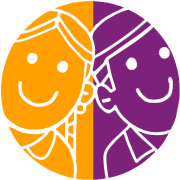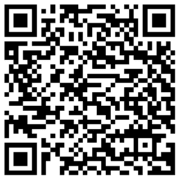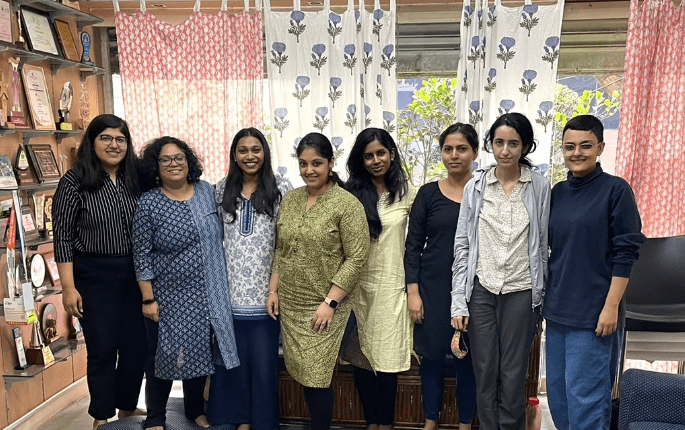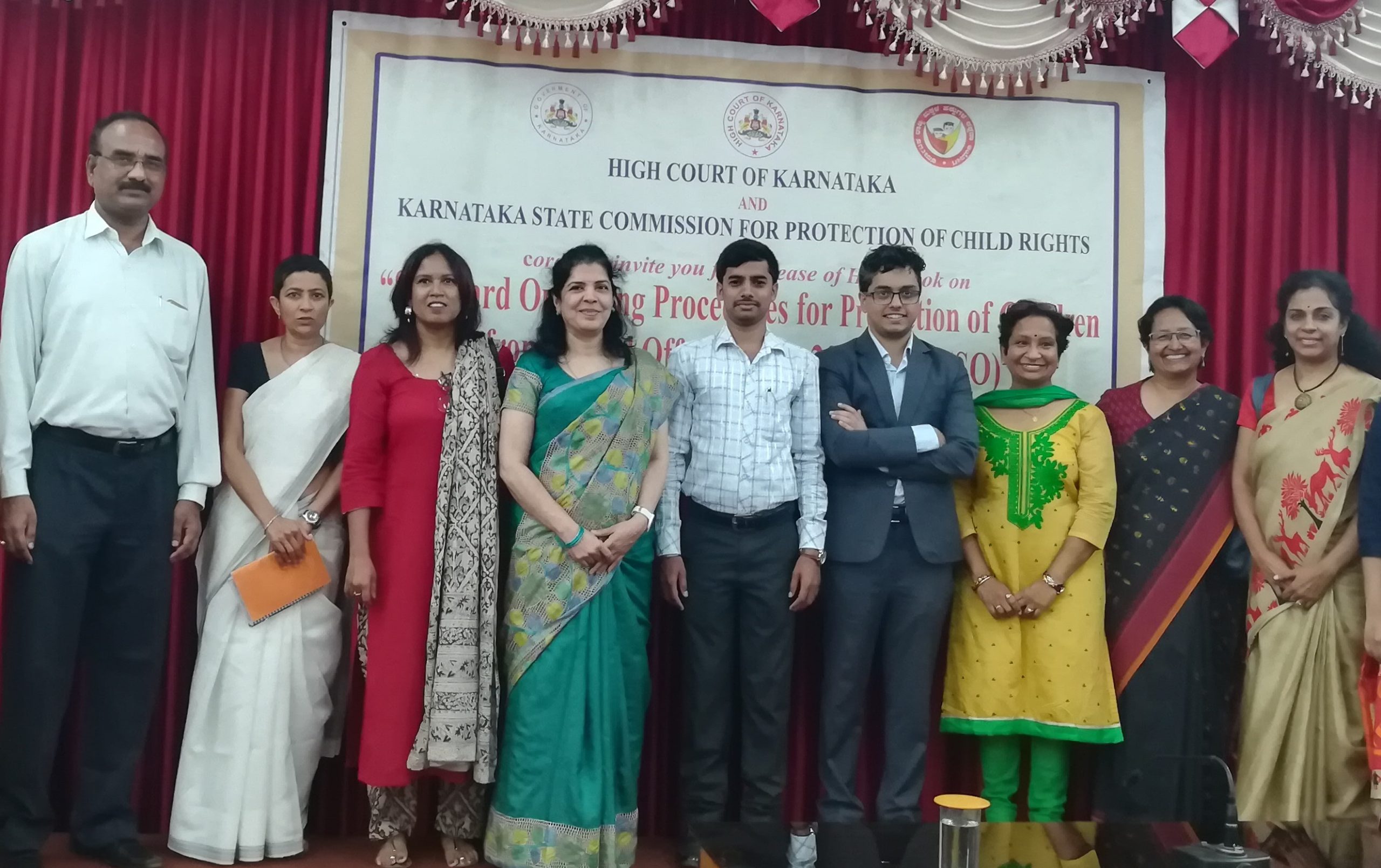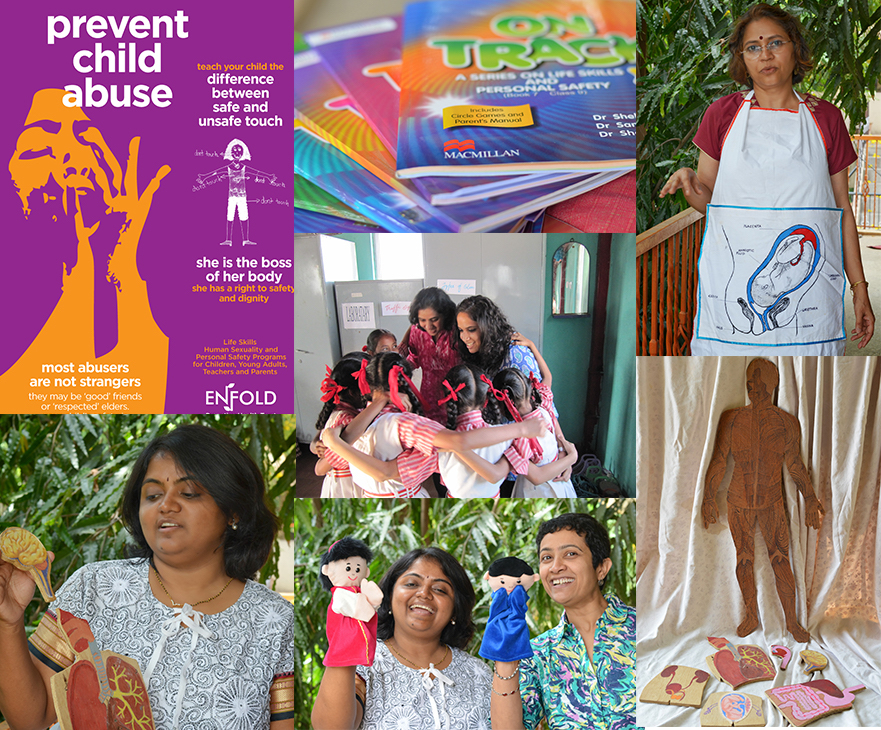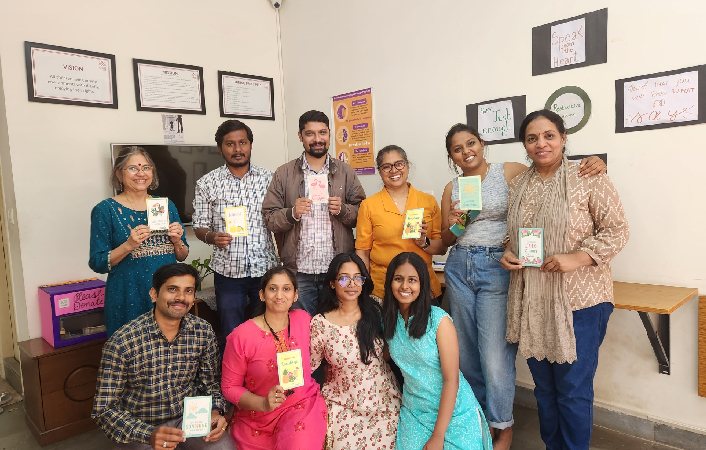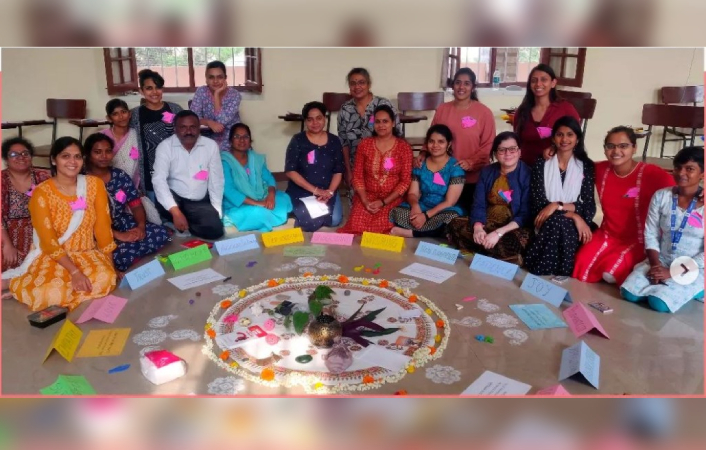Introduction
All children and adolescents, with and without disabilities, have the right to age and developmentally appropriately comprehensive sexuality education (CSE) that is value, rights-based, and culturally relevant. As a part of sexuality education, children and adolescents have the right to learn about and exercise the personal safety rules. Such education enables children to develop an understanding of and respect for their body and its functions. It helps them understand and follow social sexual norms for clothing, touching and talking, identify unsafe behaviour and confidently report it to their safe adults without fear of being shamed, blamed or stigmatised.
People would hold the person who behaves in an unsafe manner responsible and accountable and support the victim to heal. Discussion on sexuality would help adolescents navigate puberty with dignity, experience their sexuality without guilt or shame and express it in socially responsible and appropriate ways. Their right to sexual and reproductive health education and related services would be respected and enabled.
Personal Body Safety Rules
I follow Personal Body Safety Rules:
Rule 1: Clothing rules
– I keep my private parts covered in front of others. Though we don’t cover our mouths, it is private, too.
Rule 2: Touching rules
– I don’t touch my private parts in front of others.
Rule 3: Talking rules
– I talk about private parts with Safe Adults. I ask questions and discuss concerns regarding these parts with them.
I am a Safe Person if I follow personal safety rules for myself and for others. I do not touch talk, or behave in an unsafe manner with others.
Safe Adults
Most people care for children and follow personal safety rules for themselves and others. These are Safe Adults. Think of your Safe Adults. Trace your hand on a piece of paper. Along each finger, write the name of one ‘Safe Adult’. In the palm, write ‘My Safe Adults’. Pin this up, or keep the paper with you.
Safe and Unsafe Touch
Rule Breakers:
Like some people steal or rob, there are some people who behave in an unsafe manner by deliberately breaking the personal safety rules of children. They may touch, tell or show children things that are considered private. These individuals are engaging in behaviour that is considered inappropriate and unsafe. They are responsible for what they have done. It is not the child’s fault. This person can learn how to behave in a safe manner with others. Our laws prescribe punishment for such people.
You can tell your Safe Adult about someone who broke personal safety rules.
Personal Safety Guide: No-Go-Tell
If someone breaks personal safety rules, I can follow the No-Go-Tell Personal Safety Guide:
1) NO’ – I can say “No’ to that person – I can shout or yell or say “No’’ by my body language
2) GO – I can go away from that person as and when I can
3) TELL – I can tell a safe adult about this person because that person is doing something unsafe.
Here is how a child can tell their Safe Adult about the person who broke these rules, “That person has been touching, showing, or doing unsafe and indecent things.” or “I feel unsafe with that person,” or “I feel uncomfortable with how that person behaves.”
The child can keep telling until someone listens and takes steps to stop the rule breaker.
Who is responsible?
If someone deliberately breaks personal safety rules and troubles me, IT’S NOT MY FAULT! That person is at fault for breaking society’s rules deliberately. That person is responsible, not me.
Our laws provide consequences for individuals who choose to behave unsafely with others.
Shame and respect come from our speech, actions, and behaviour. Shame and respect are not in any part of our body. People who break rules need to take responsibility for their behaviour, accept they have done something unsafe, and make efforts to work towards changing their behaviour.
Law for Child Safety
Dignity and safety are also your fundamental rights!
The person who breaks rules is at fault for breaking society’s rules deliberately:
Findings of the Child Abuse Study by the Government of India
– Most people who behaved unsafely (rule breakers) with children were adults, known and trusted by the child.
– They target children of any gender, boys, girls, or children of other gender identities—anyone from gender-diverse communities.
– They target boys and girls almost equally.
– Unfortunately, most children did not tell any safe adult about the abuse or the person who behaved in an unsafe manner with them.
The person can continue their unsafe behaviour and abuse several children if they are not reported, complained about or in some way held responsible or accountable. Our laws prescribe punishment for such behaviour.
The POCSO Act 2012
It requires that all adults report child abuse so that the police can take action against the abuser. An accused is considered guilty unless the person can prove their innocence. A child need not go to a police station to report the abuse. The police will come in plain clothes to the place that the child finds comfortable, to get details about the abuser and what they did. The law provides for child friendly procedures during the entire process.
Child Helpline
Any child (a person below 18 years old) can call CHILDLINE at 1098 if they need help. A child can call this number to complain about rule breakers and ask for help.
Internet Safety
The Internet provides lots of information and entertainment. It is like a highway where information travels at super high speeds and reaches anywhere in the world, any number of people, almost instantly. I can learn how to ‘drive’ safely on this highway, when to drive and with whom, where to go, what to avoid and what to look out for, and how to keep myself and others safe.
It’s Real!
I can remember that, like the physical/natural world we all live in, the digital world is also real. People ‘meet’ each other on the internet, make friends, study, or work online. Many people shop online, transfer money, take virtual* tours of places, and even order food online!
Sometimes, like in the physical world, people tease, taunt or spread rumours online. Some people use the internet to fool people, commit fraud, and abuse adults and children.
Abusers often target children because they are trusting and eager to explore new things but are unaware of the dangers. The Internet appears to be harmless, private, momentary, and ‘deletable’ – the very things it is not. Hence, if I am a young child, I can stay away from using this ‘highway’ unsupervised – I am too young to drive alone!
(+) Rules and Laws
As in the physical world, several rules and laws also apply to the digital world. Personal safety rules apply on the internet and for taking or sharing photographs or videos on our mobiles. The Information Technology Act, Cyber Crime Investigation Cells, and Police Stations deal with people who use digital technology to hurt or act unsafely with others.
I can follow rules and respect other people’s right to safety, dignity, and privacy while using the internet.
(+) Net Smart
I Know That
Even though I have not shared or posted my personal information, it is possible to get my age, school name, or home address from the photos or videos of family, friends, or school events or blogs I post.
Abusers often pose to be much younger than they actually are and post false information, including photos of themselves, to befriend children.
I can still use the internet safely and smartly.
Being Net Smart
1) Keeping Safe Adults* informed that I am using the internet.
2) Choosing screen names that do not give away my name, gender, or address of the school, home, or places I frequent.
3) Setting privacy settings* on my account.
4) Selecting a long password that can be
– An easy-to-remember sentence.
– With numbers, alphabetical characters, and at least one special character (symbols).
– Changed regularly to avoid it getting decoded by someone.
5) Being aware of a ‘friend’ who tries to be my ‘one and only special friend’.
6) Avoid downloading stuff unless it is from a trustworthy source*.
7) Make friends only with those people whom I know personally – that is, people I have met physically.
Being Net Smart at Cyber Cafes
I can use shared computers and public internet connections safely by:
1) Clicking NO when I see the pop–out window– “Do you want the computer to remember you / your username*?”
2) Logging out /signing out of all sites I visit using my username and password.
Being Net Smart – Reaching Out to Safe Adults
1) Telling my safe adult about any request to meet in person from unknown people or people I may have been communicating with for a long time but have never met before in person.
2) Informing my safe adults if I go to meet people I have met in the virtual world and not in the physical one.
Being Net Smart – Identifying Trustworthy Sites
1) The website URL will begin with https:// rather than http://
2) The site will have a trust certificate
3) The site will have a famous brand name attached to it.
4) Check for reviews on the website. That will help you decide on exploring the site further.
5) The site will not ask for personal information
Being Net Smart While Interacting With Individuals
People who deliberately set out to harm children for their personal gain are difficult to identify.
1) They appear friendly, law-abiding, and harmless.
2) They could be known or unknown people, friends, or strangers.
3) They typically behave decently initially.
4) They appear friendly and helpful, they may even send gifts / give a lot of attention to gain my trust.
5) Later, they begin to send or ask for inappropriate material or a meeting in person.
6) Their unsafe nature comes out in their posts the words, pictures, or videos they forward or post. Checking their social network posts will give me the information.
7) Unsafe people use several types of software and IT tools to gather and store information, hack into people’s computers, download their private information and photos, manipulate and alter these and repost them.
(+) Cyberbullies
These are usually peers, classmates, and ‘friends’ who use email, chat rooms, websites, group messaging, and other forms of electronic communication to:
– Taunt, ridicule, and make cruel and harmful remarks about individuals
– Make direct threats or encourage acts of violence
– Post derogatory photos or private information or sexually harass
– Spread rumors
As in the physical world, children who bully others may feel unhappy about themselves, in their home environment, or elsewhere. Sometimes, people choose to bully because they are feeling angry or jealous or because they feel it is a ‘cool’ thing to do. Many a time, the bully needs as much help as the bullied.
Bullying is harmful, mean, and unfair. In the long run, it is damaging for all those involved and needs to be stopped with the active involvement of other peers and adults.
When I feel targeted by a cyberbully, I can:
1) Avoid replying to the person.
2) Save the hurtful post or take a picture of it and get the help of a Safe adult to deal with the situation.
3) Do the same if I find that another child is being bullied.
4) Complain about cyber bullies or unsafe people on the internet even if my internet privileges may be taken away.
When I ask for help and report unsafe situations to adults it conveys that I am sensible and actually mature enough to handle the digital highway.
Asking for help is a sign of strength and maturity!
(+)STOP – GO Offline – TELL
If I feel uncomfortable, embarrassed, upset, scared, blackmailed, or threatened by anyone’s posts online,
I can:
– STOP chatting/ emailing/ messaging that person. GO Offline and TELL my Safe Adult.
– Save the hurtful/indecent post or take a picture of it and take the help of a Safe Adult to deal with the situation
– It is not my fault even if I had added this person as my friend against my parent’s advice. That person is doing something unlawful and unsafe. That person needs to be held responsible and accountable for their behaviour.
It is never too late or too trivial. Discussing things that bother me with my Safe Adult/parents/caregivers is always safer and smarter.
(+)Digital Citizen
Unlike the physical world, whatever I post/ emails/ messages I send digitally on the internet remains traceable back to me even after several years. What I say to my friend in a classroom may be heard by a few others within earshot; there is no record of it and most of them will forget about it in due course of time. But if I were to post the same thing on a social network website, it could be read, shared, or forwarded to hundreds of people, known or unknown to me. The message could be traced back to me as every computer has a unique IP address*.
Colleges, universities, and employers often check the ‘digital’ background of candidates to get an idea of the candidate’s past behaviour and personality
I can be a responsible digital citizen by:-
1) Being Net Smart on the Internet
2) Using the internet for lawful purposes.
3) Being mindful of my digital manners and not deliberately causing harm or hurting another person.
4) Taking care of and looking out for my friends on the digital highway.
5) Telling a Safe Adult if I see a person bullying, terrorising, spreading rumours, morphing pictures, or posting nasty comments about me, my schoolmate, my friend, or a person I know.

